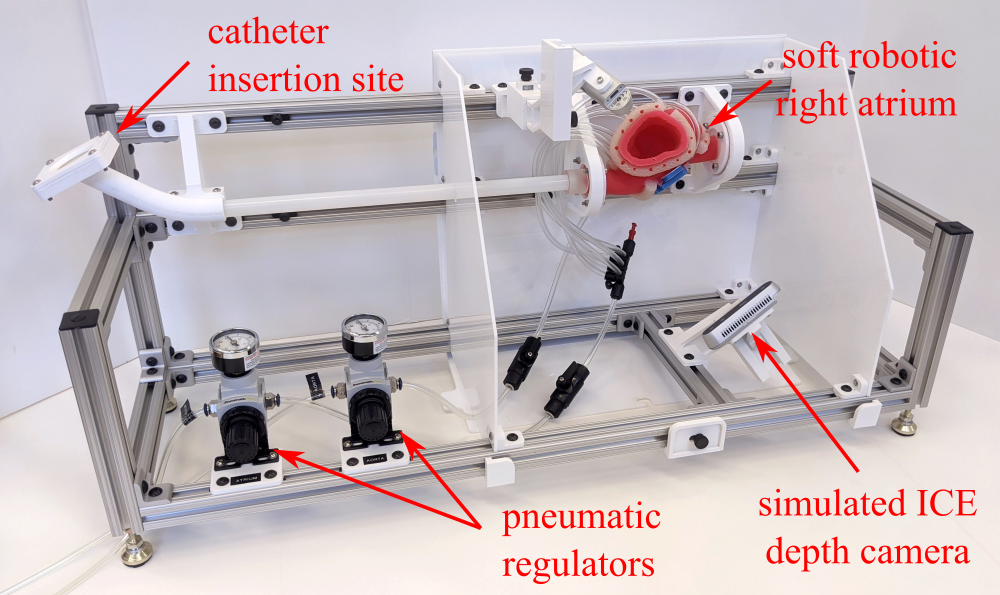Soft Robotic Heart
University of Illinois at Urbana-Champaign | OSF Healthcare | Jump ARCHES
Background
Transseptal puncture (TP) is the technique used to access the left atrium of the heart from the right atrium during cardiac catheterization procedures such as atrial fibrillation ablation. Through repetition with actual patients, experienced TP operators develop manual skills to manipulate the TP catheter assembly inside the right atrium to their target on the fossa ovalis.
The Soft Active Transseptal Puncture Simulator (SATPS) is designed to match the dynamics, kinetostatics, and visualization of the heart during TP, providing a low-risk training environment for new operators.
Labels and catheter were added to the heart illustration drawn by Patrick J. Lynch, used under CC BY 2.5.
Soft Robotic Right Atrium
A soft robotic right atrium actuated using fiber-reinforced elastomeric enclosures (FREEs) mimics the dynamics of the heart felt through the catheter assembly. The atrium and the FREEs are cast from soft silicone rubber using 3D-printed molds.
Fossa Ovalis Insert
A replaceable, puncturable fossa ovalis simulates the tissue properties of the real fossa to provide accurate kinetostatic force feedback during tenting and puncture.
The fossa insert is made from Smooth-On Dragon Skin 10, which has the same tenting and puncture responses as human fossa tissue from literature [1].
Simulated ICE
TP operators rely on visual feedback from intracardiac echocardiography (ICE) to verify needle position. Using a depth camera and computer vision techniques, the SATPS simulates ICE, giving the user live visual feedback representative of an ultrasound monitor during an actual TP procedure.
Validation
We are currently conducting validation sessions with experienced clinicians to answer the following questions:
Is an active simulator more realistic than a passive simulator?
Does the SATPS realistically simulate transseptal puncture?
Is the SATPS a useful training device for transseptal puncture?




References:
[1] S. A. Howard, S. G. Quallich, M. A. Benscoter, B. C. Holmgren, C. D. Rolfes, and P. A. Iaizzo, “Tissue Properties of the Fossa Ovalis as They Relate to Transseptal Punctures : A Translational Approach,” J. Interv. Cardiol., vol. 28, no. 1, pp. 98–108, 2015.




